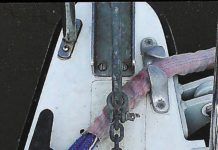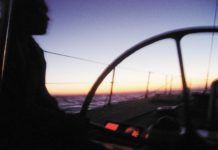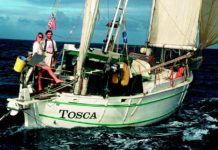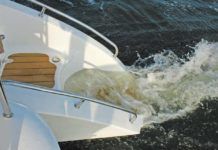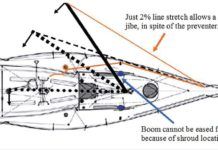Stopping Anchor Chain Twist
When an anchored boat spins, the anchor chain twists, and the anchor can come up backward. One solution is an anchor swivel, but failures with some poor designs are a concern-a lovely stainless swivel on one of our test boats had an interior crack that became visible only when disassembled. And as we found in our most recent test, many swivels arent very effective at reducing twist due to the inherent friction in the swivel.(see How Well Do Swivels Reduce Twist, Practical Sailor March 2016 online).
Setting an Anchor in a Small Boat
In our ongoing study of ways to compare, and hopefully improve the way our anchors set, weve learned that it takes time and slow, delayed setting to make best advantage of very soft mud. However, firm sand and weeds can have the opposite character-making it hard for the anchor to penetrate.
Sleep Routines for Long Passages
The US Navy has finally gotten around to a serious study of watch standing schedules (https://goo.gl/dE4W4R). As an active duty Navy Medical Officer, I certainly saw enough injuries related to sleep deprivation; fortunately, none were as disastrous as the recent collisions. I am glad to see the navy move away from a centuries old approach to scheduling watches.
2017 Top Sailing Gear
Each year, just prior to the fall boat show season, Practical Sailor editors consult with our testers to come up with a select list of Gear of the Year from the previous 12 months of testing. For most of the 2016-2017 testing season we focused on essential everyday products that owners of boats of all sizes-with a few exceptions-rely on. While our testers appreciate new technology, they recognize that a safe passage often depends on the reliability of the weakest link, and that weakest link is often a seemingly minor component that gets little attention. In short, our Editors Choice list is not the sexiest product roundup, but if youre serious about keeping your electrical connections corrosion free, making professional repairs on a blue-collar budget, maintaining a safe speed in a steep following sea, or looking for a way to manage a big genoa without upgrading to an electric winch, youll appreciate it.
Making a Safe Landfall
I feel for the crew of Tanda Malaika, a family of six whose 46-foot Leopard catamaran was lost on a reef on the southwest corner of Huahine in French Polynesia in July this year. The loss is especially acute because, as the captain himself points out, it could have been avoided. The account of the wreck, provided by the skipper/owner Dan Govatos, and recorded in the podcast Slow Boat Sailing offers important lessons for cruising sailors.
Multihull Special Report
In Part 1 of our special report on multihulls we scrutinized the implications of stability and the benefits derived form a wide stance, buoyancy and hull shape of multihulls. This time well look at structural issues and the energy transfer that takes place due to a multihulls impressive initial resistance to heel. We will also delve into what all this means for the rig, rigging, hull structure and hardware interfaces.
Skipper Recounts Capsize 57-foot Atlantic Cat
Charles Nethersole has been a professional sailor for decades, and in addition to racing commitments and deliveries, hes accrued 14 years of sea time as a professional captain aboard 55- and 57-foot, Chris White designed, Atlantic catamarans.
Controlling Jibes With Boom Brakes
Ten years ago, you may recall having seen the Walder boom brake demonstrated at sailboat shows. There wasn't anything quite like it. The device caught on for a time with single-handed racers, who liked the way it slowly eased the boom across during jibes. (Philippe Jeantot had one on Credit Agricole when he won the first BOC Challenge.) When your hands are full with jib sheets and the wheel or tiller, there's too often the tendency not to pull in the mainsheet to minimize the shock load on the gooseneck when the boom slams across to the new tack.
Tools to Tame the Jibe
The loads of a flying jibe in late summer squall are enough to shred sails, rip out deck or boom fittings, bend or break the boom gooseneck, or even bend the boom itself. The novice sailor learns very quickly to be wary of an unintentional jibe.
The Best Prevention is a Preventer
Ideally, you don't put yourself in a position where an accidental jibe can happen, but even an experienced sailor can get caught off guard by sudden, violent wind shifts in mountainous coastal areas or in night-time squalls. The most common way to take the fright out of an unintentional jibe involves a preventer, something weve examined in a number of previous reports. Preventers are especially useful when sailing deep downwind in rolly conditions, when exaggerated yawing lets the wind sneak behind the mainsail.




































